Coil IL Complete 100 Hour Service Instructions (Part 1 of 4)
May 2023 orig., Jun 2024 rev.
Table of Contents
Recommendations and Warnings
Cane Creek recommends only trained suspension technicians perform service on all suspension, using all required tools and following all proper procedures. Anyone without access to the proper equipment or with any concerns on the procedures should defer to an authorized Cane Creek service center for service. Improper service can result in loss of performance or suspension failure. All Cane Creek shocks have pressurized nitrogen and oil, even coil shocks. Follow the service procedures exactly as written to avoid possible injury or harm to the suspension. Always wear eye protection while performing suspension service.
Please dispose of all waste products and materials through proper channels to avoid contamination of the environment.
Any damage or issues resulting from improper service will not be covered by warranty. If you have a shock still in its original warranty period and do not wish to void your warranty, please contact an authorized Cane Creek service center.
These service instructions cover the basic service procedures using standard service kits. If your suspension requires parts beyond standard replacement parts – shaft, damper tubes, end eyes – please consult your authorized Cane Creek service center or contact us at our Cane Creek Support Center.
Service Notes
The Air IL and Coil IL as well as the Standard and Trunnion and Previous Gen and Current Gen variants of both share many service steps. Some images in these instructions may not be identical to the he valve body or outer damper tube to the shock being serviced, but that is only when the process is the same for the shock in the image and the shock on your bench. When steps vary, that will be noted and images included.
Service Kits
BAD2370-G2 or BAD2370T-G2 – Coil IL G2 Rebuild Kit (Standard or Trunnion)
Required Cane Creek Tools
BAD1032 – Gland Nut Wrench
BAD1174 – Oil Seal Head Pin Spanner Wrench
BAD2651 – IL G2 Fill Needle assembly
DBT016 – DB Gas Fill Needle
AAD0555 – 8mm & 9.5mm Shaft Clamp
AAD1454 – Kitsuma/IL Trunnion CS Bullet
BAD1273 – Inner Damper Tube Install Tool
AAD2650 – IL G2 Service Cradle (Standard Mount only)
Additional Tools & Supplies
Allen wrenches – 1.5, 3 & 4mm
Torx wrenches – T10, T15 & T25
1/2″ crowfoot wrench
Torque wrenches
Pick
Suspension Grease
Motorex 4wt Racing Fork Oil
Vacuum Oil Fill Machine
Nitrogen Fill System
Torque, Loctite, Oil & Nitrogen Specs
Torque & Loctite Chart
| Part | Torque Spec | Loctite Spec |
|---|---|---|
| Shaft Bolt | 5 Nm | 243 (Blue) |
| TSN | 0.6 Nm | 668 (Green) |
| Climb Switch Set Screws | 0.2 Nm | 243 (Blue) |
| Inner Damper Tube | 17 Nm | 263 (Red) |
| Oil Seal Head | 15 Nm | None |
| Gland Nut | 52 Nm | 243 (Blue) |
| End Eye | 4.8 Nm | 243 (Blue) |
| Climb Switch Screw | 0.16 Nm | 243 (Blue) |
Oil Chart
| Oil Location | Oil Type | Oil Amount |
|---|---|---|
| Damper Fill | Motorex 4wt Racing Fork Oil | Fill to 3 Bars |
Nitrogen Chart
| Nitrogen Location | Nitrogen Pressure |
|---|---|
| Valve Body | 11 - 12 Bars |
Related Technical Service Bulletins
Review all related TSBs before performing any service.
No Coil IL specific TSBs at this time.
General Prep




Clean shock. Record tune if desired. Remove hardware. Remove bushings if replacing. Unthread spring preload. Remove spring clip. Remove spring. Note and remove any stroke reduction clips.

Removing Spring Clip

Removing/Installing Spring

Stroke Reduction Clip

Spring, Clip & Hardware Removed
Damper Disassembly










Step 1 – Gas & Oil Removal
***Use caution as nitrogen is pressurized.***
Standard Valve Body Degassing:
Loosen gas fill cover half a turn with 4mm Allen. Bleed gas with gas fill needle. Remove gas fill cover completely. Use pick to pry out gas fill plug.
Trunnion Valve Body Degassing:
Bleed gas with gas fill needle.
Oil Removal for Both:
Remove oil fill screw with T15. Remove slowly as there may be aerated oil behind fill screw. Empty oil through fill screw by cycling the damper.














Step 2 – Oil Seal Head & Shaft Assembly Removal
Clamp valve body in vise. Use Oil Seal Head Pin Spanner (BAD1174) to remove oil seal head. Remove shaft assembly from damper body. Pour out any remaining oil from damper body.

Prepped for Removal of Oil Seal Head

Removal of Oil Seal Head

Outer Damper Tube Disengaging from Valve Body

Removal of Shaft and Outer Damper Tube

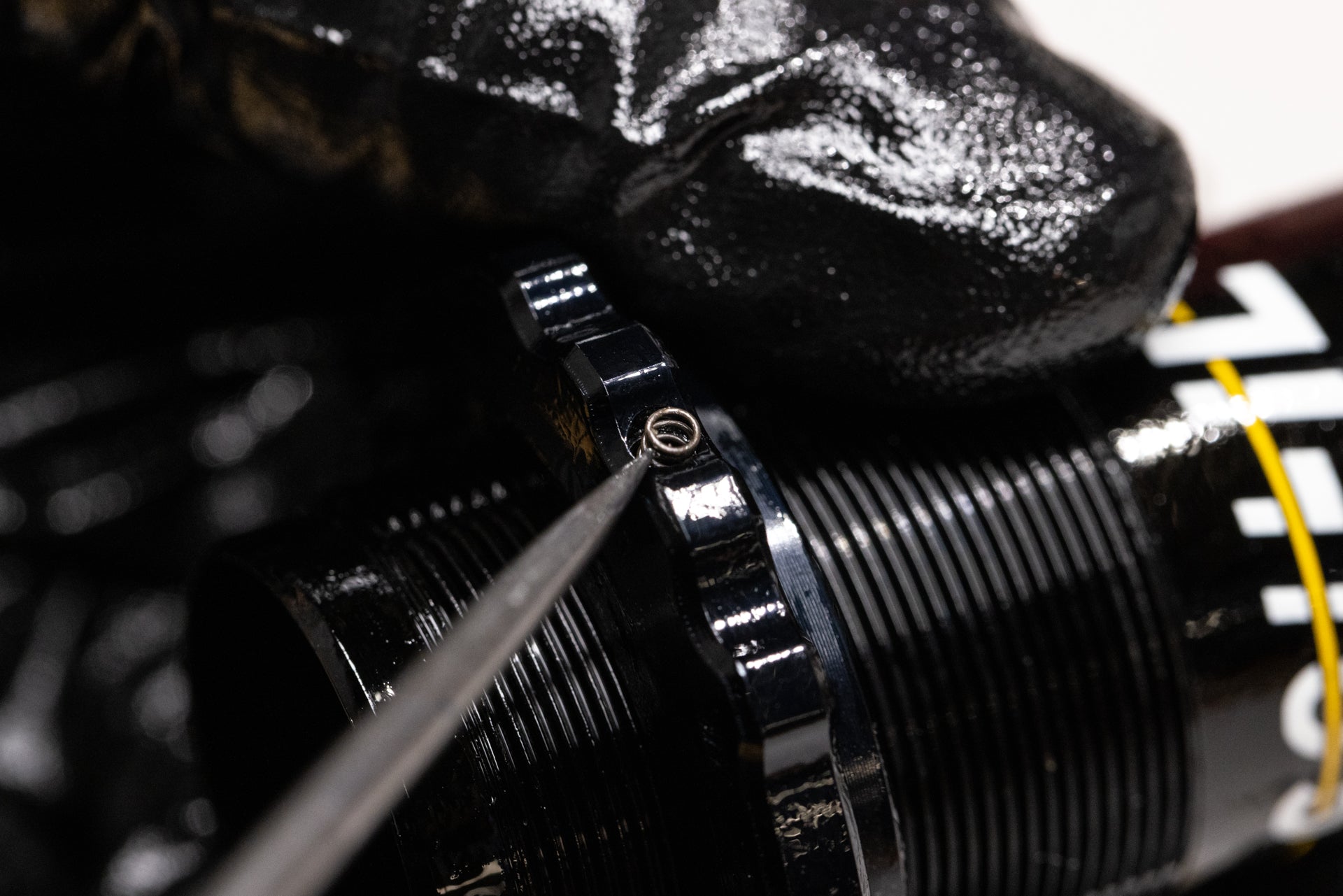
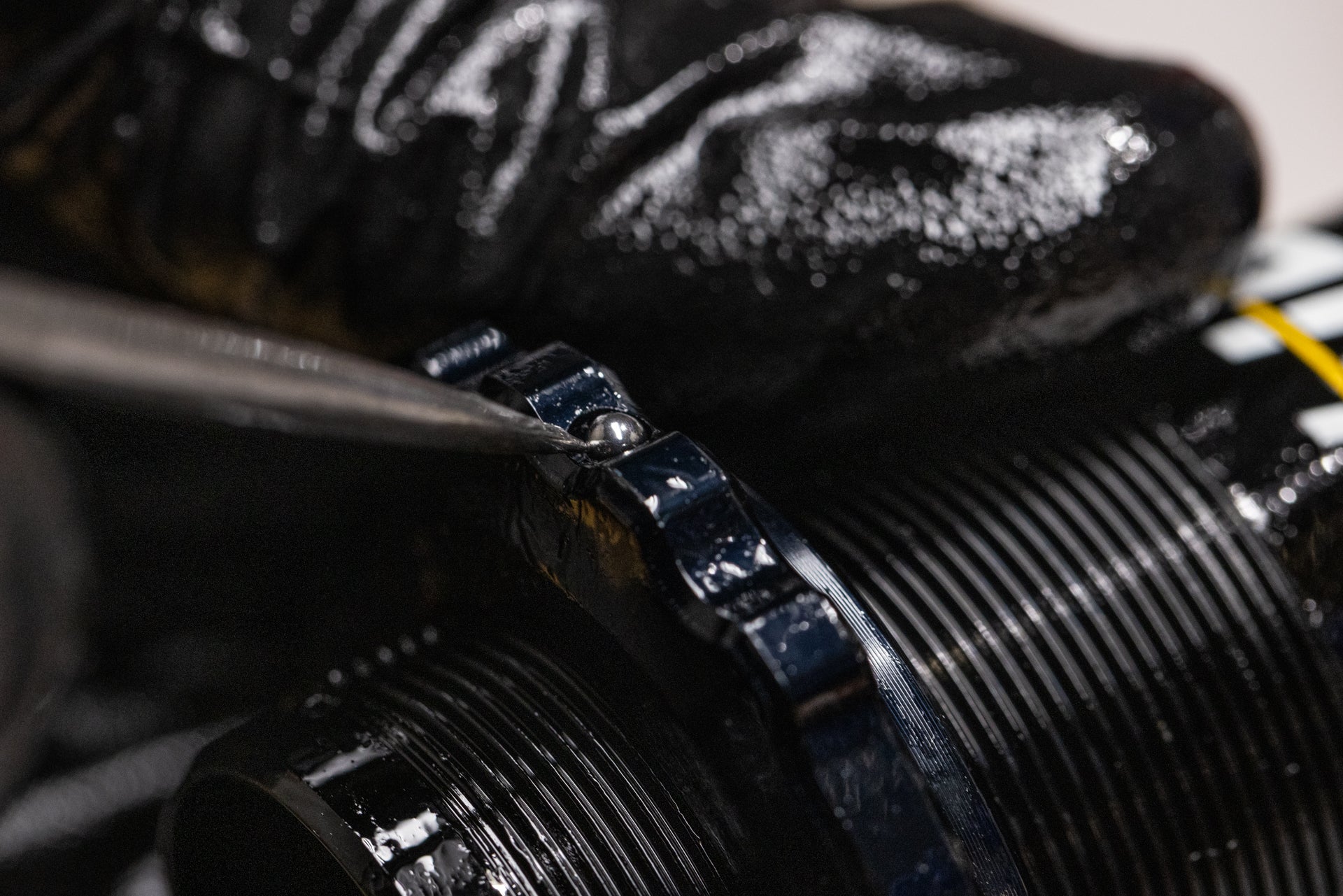

Step 3 – Preload Collar Disassembly
Remove set screw with 1.5m Allen. Remove detent ball and spring. Remove preload collar from outer damper tube.

Preload Collar Set Screw Removal/Install

Preload Collar Detent Spring Removal/Install

Preload Collar Detent Ball Removal/Install

Preload Collar Removal/Install





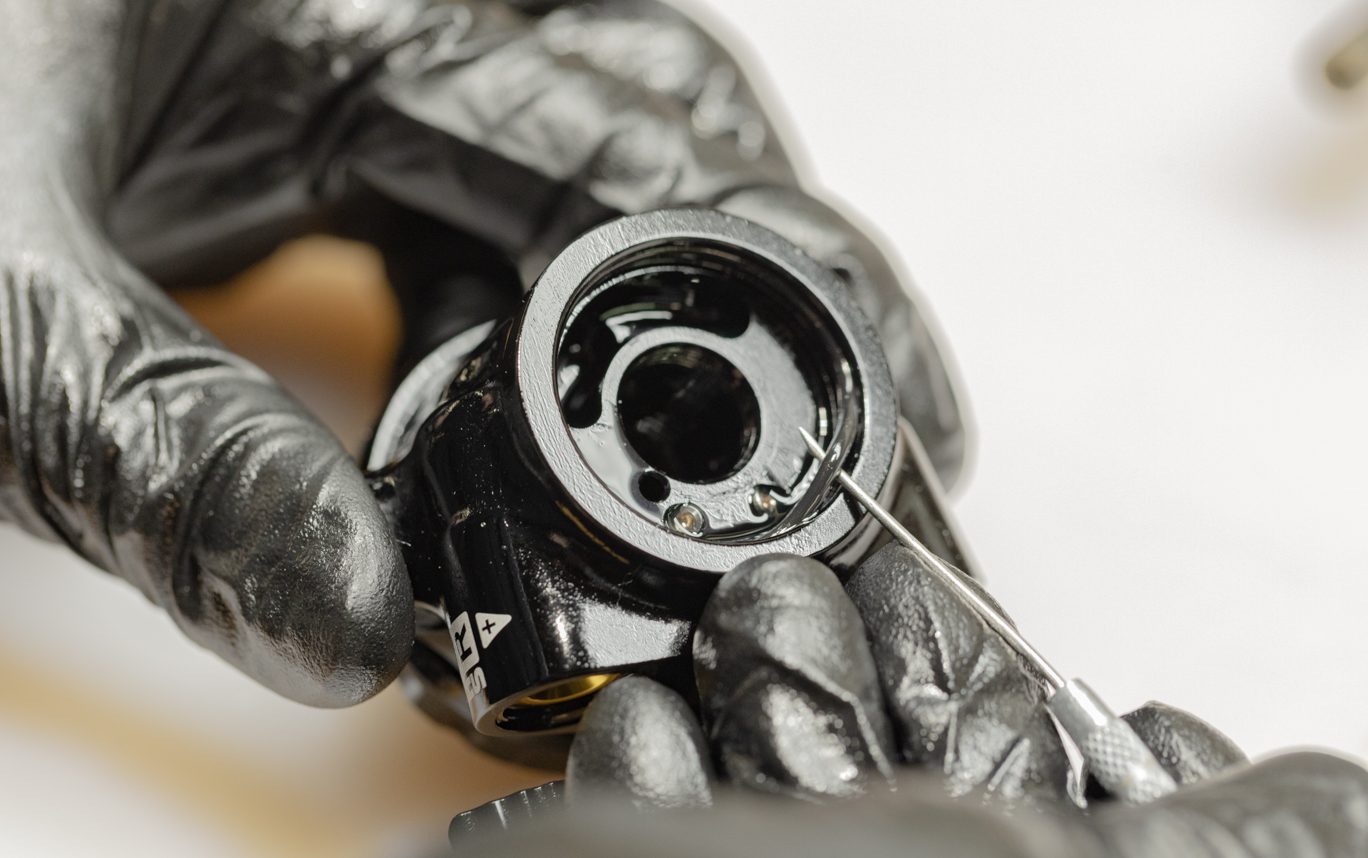
Step 4 – Inner Damper Tube Removal
Using Inner Damper Tool Wrench (BAD1273), remove inner damper from valve body. Inspect interior of inner damper tube for piston band wear. Inspect damper tube threads and remove any remaining Loctite with pick. Clean thoroughly. Replace inner damper tube if necessary. Remove valve body o-ring and discard.




















Step 5 – Gland Nut & Bladder Removal
Using T10, remove Climb Switch lever screw. Remove CS lever. Reclamp valve body in vise. Use Service Cradle (AAD2650) for Standard valve body. Using Gland Nut Wrench, remove gland nut. Breaker bar may be required. Pry off gland cover or end eye. Remove bladder with pick and discard.























Step 6 – CS Spool Valve Removal
Using a 1.5mm Allen, remove 2 set screws located inside of valve body next to inner damper tube purchase. Remove remaining set screw in valve body exposing spring and detent ball. Remove spring and detent ball. Using CS lever, unthread spool valve and remove. Pinch & remove and discard spool valve o-ring.
















Step 7 – High Speed Adjusters Removal
Using 3mm Allen, dial High Speed adjusters in to gain access to High Speed circlips. Remove circlips. Back High Speed adjusters all the way out. Pinch & remove and discard o-rings on adjusters.
Note that the Compression spring is 20wt (silver), rebound is 30wt (black).












Step 8 – Low Speed Adjusters Removal
Gently bottom out Low Speed adjuster needles with 3mm Allen. Rotate circlip until the end lines up with removal groove. Using pick, get behind circlip, remove and discard. Unthread and remove needles. Remove and discard o-rings.





TSN Disassembly (if desired)
TSN service is not required as part of a standard IL service. However, if the shock exhibits any audible sounds, usually a “chirp”, during use, this could be related to a bent TSN spring. No additional parts are required to do the TSN service. Images from Previous Gen DB IL valve body, but the process is identical to the Next Gen IL.

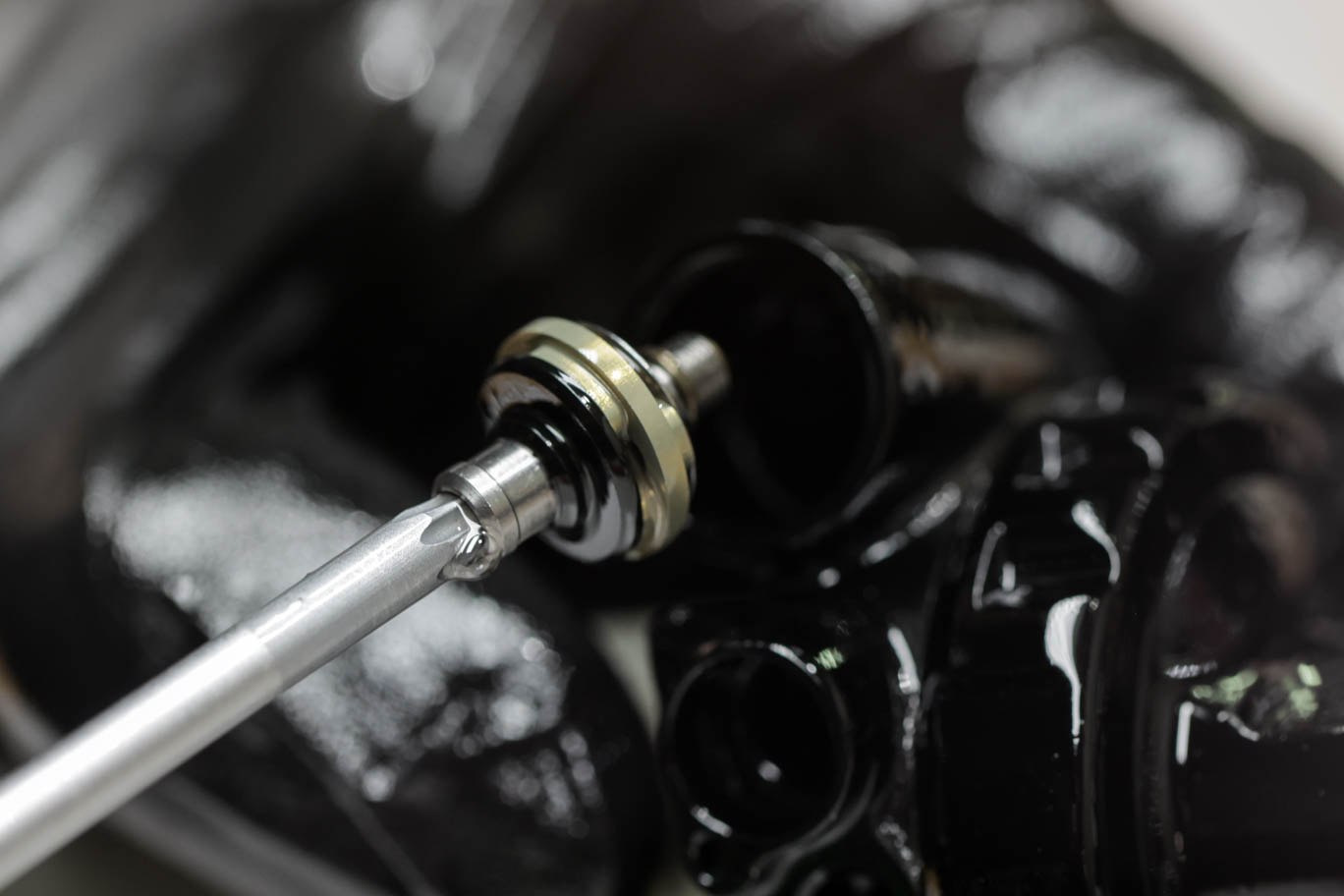
Step 1 – TSN Removal
Remove TSN stem from valve body using T15 from both High Speed valves. Clean valve body TSN threads with tap if green Loctite has built up on threads




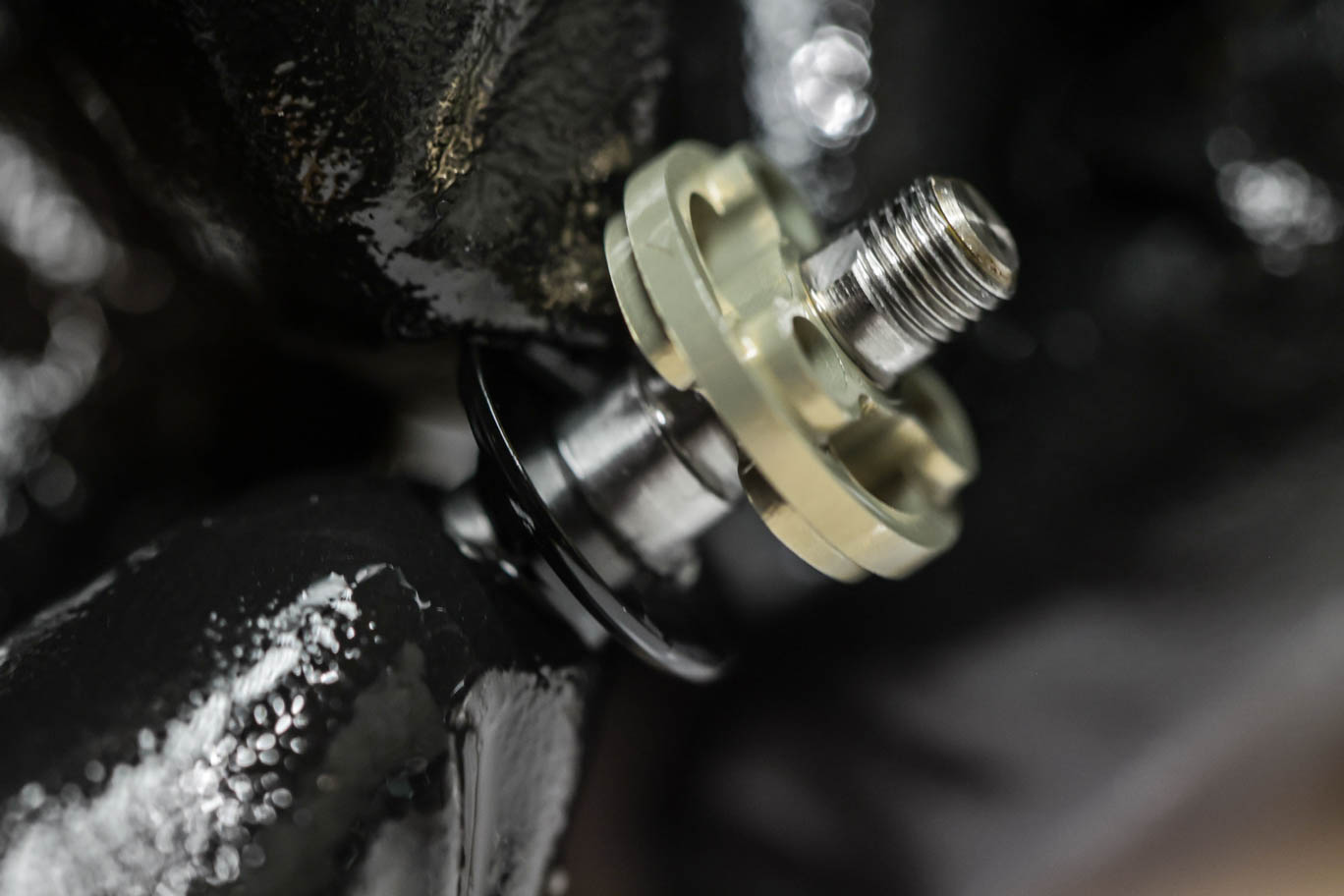

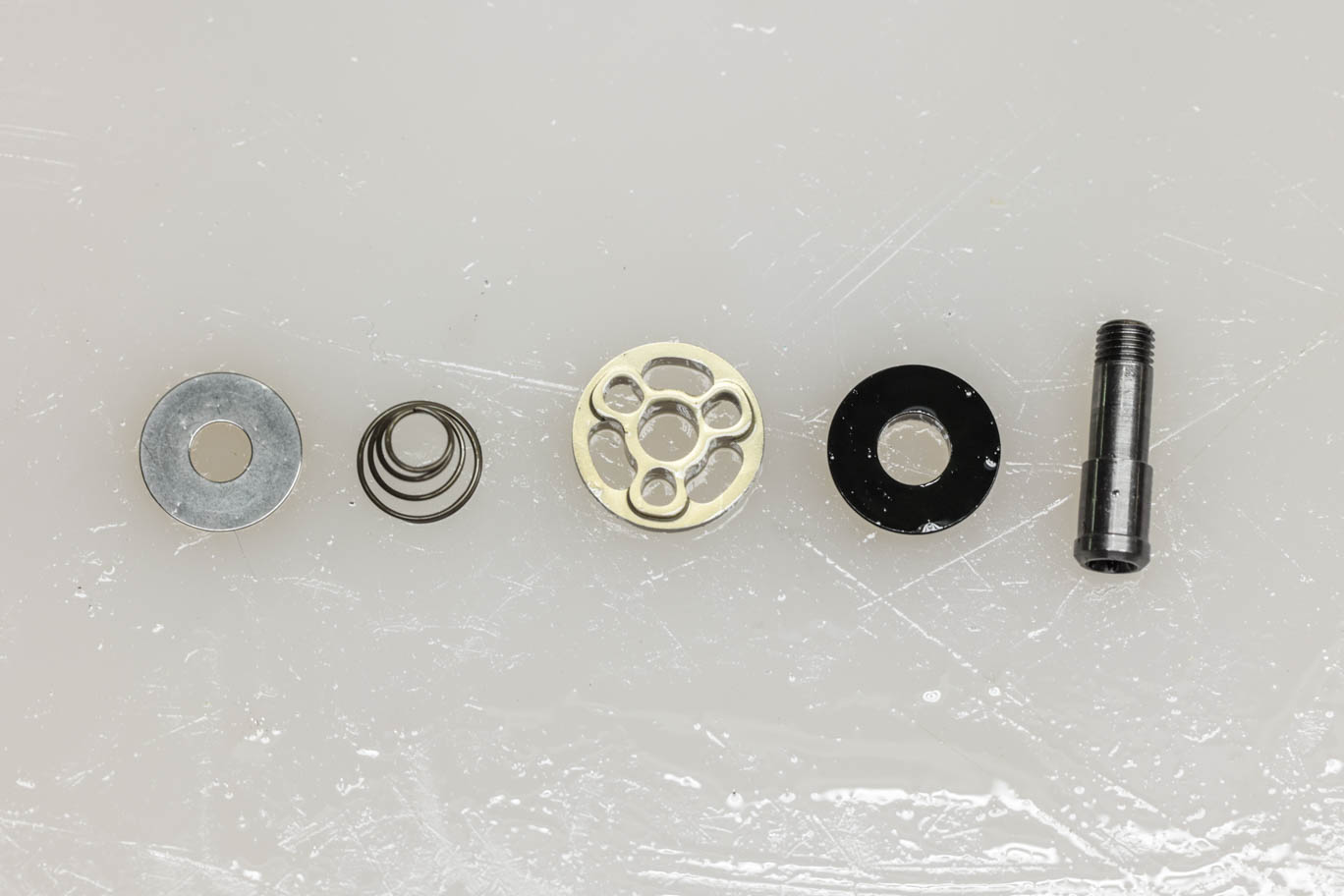
Step 2 – TSN Disassembly
Disassemble TSN assembly by unthreading spring from the TSN stem. Remove TSN shim, piston and poppet.






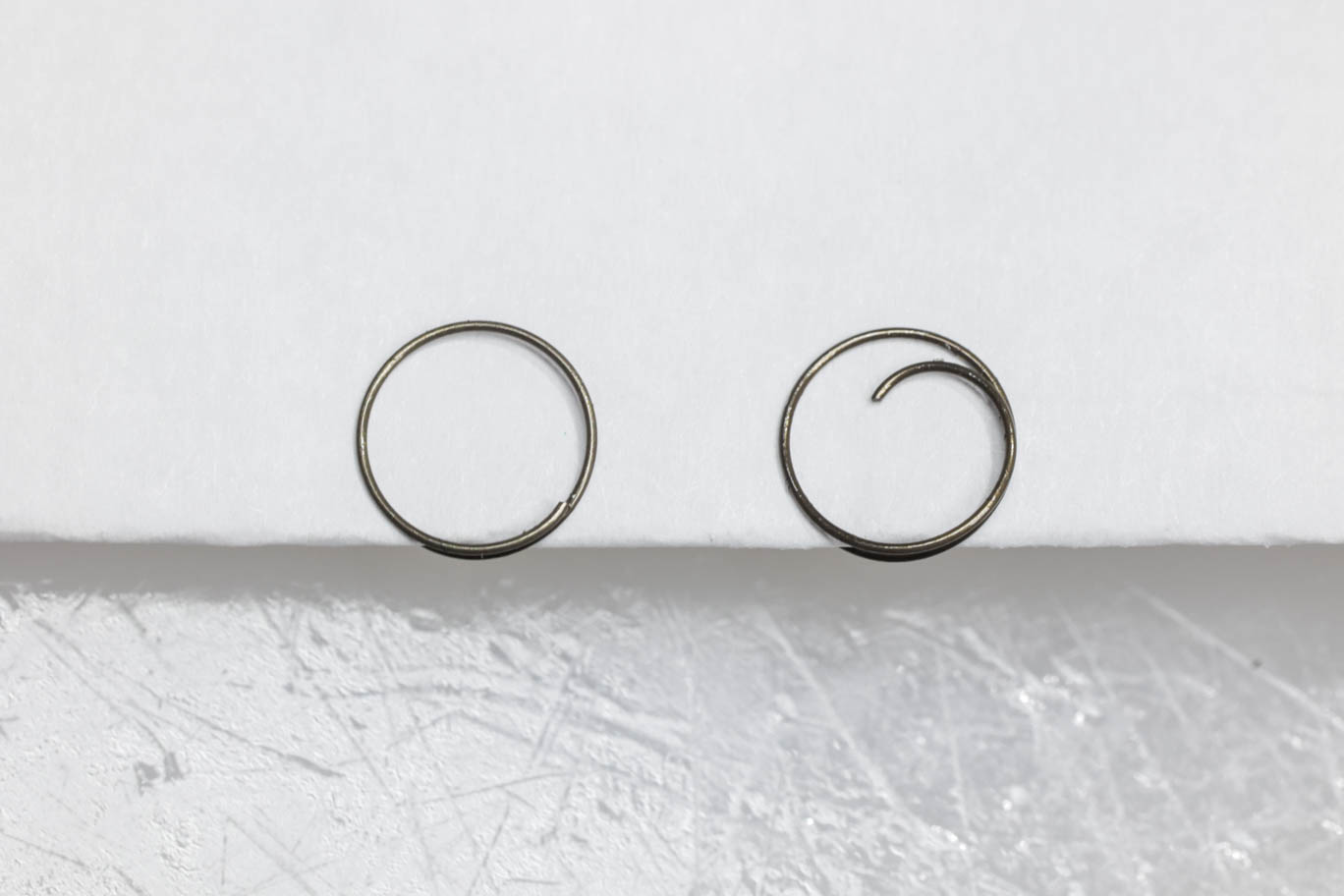

Step 3 – TSN Inspection
Inspect spring for possible bent end of spring tail which can cause valve chirp. (Correcting bent spring covered in TSN Reassembly.)

TSN Spring - Good vs. Bad 1

TSN Spring - Good vs. Bad 2

TSN Stem
Shaft Disassembly


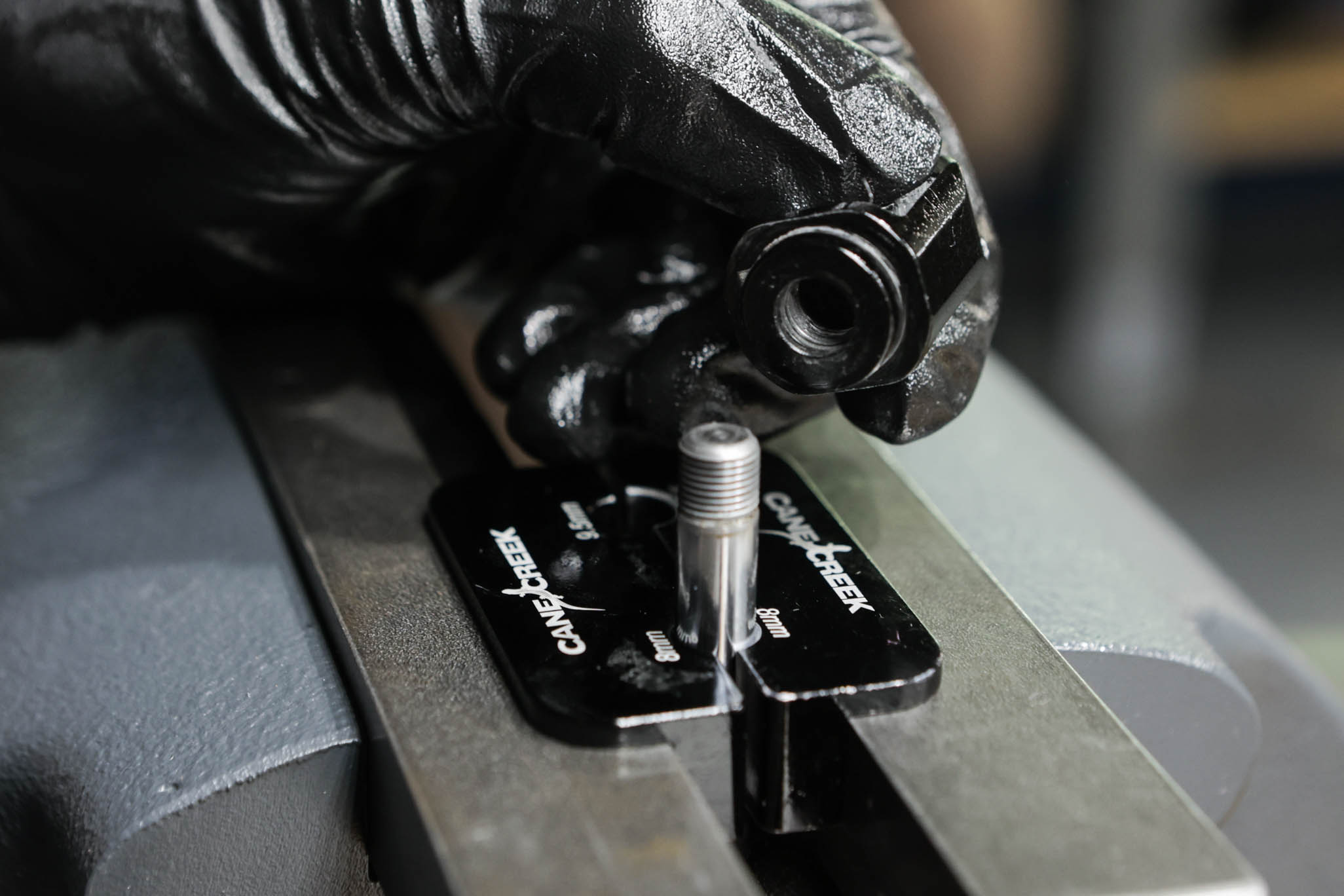
Step 1 – End Eye Removal
Clamp shaft assembly into vise using shaft clamp (AAD0555) with end eye up. Remove end eye from shaft with 1/2″ crows foot. Apply heat gun if end eye is stuck

Shaft Clamped for End Eye Removal

End Eye Removal

End Eye Removed




Step 2 – Shaft Assembly Disassembly
Flip shaft in clamp. Remove shaft bolt with T25. Remove piston, shims and stop washer, noting orientation.

Shaft Bolt Removal

Piston & Shim Stack Removal

Piston & Shim Stack Removed

Piston & Shim Stack Orientation




Step 3 – Shim & Piston Inspection
Check face shim for port wear and flip on reinstall if necessary. Check ports on piston for excessive wear. If present, resurfacing or replacement of piston may be necessary. Carefully cut piston band off piston. Pinch & remove piston o-ring.

Sealing Shim w/ Port Wear

Piston w/ Port Wear

Piston Band Removal

Piston O-Ring Removal

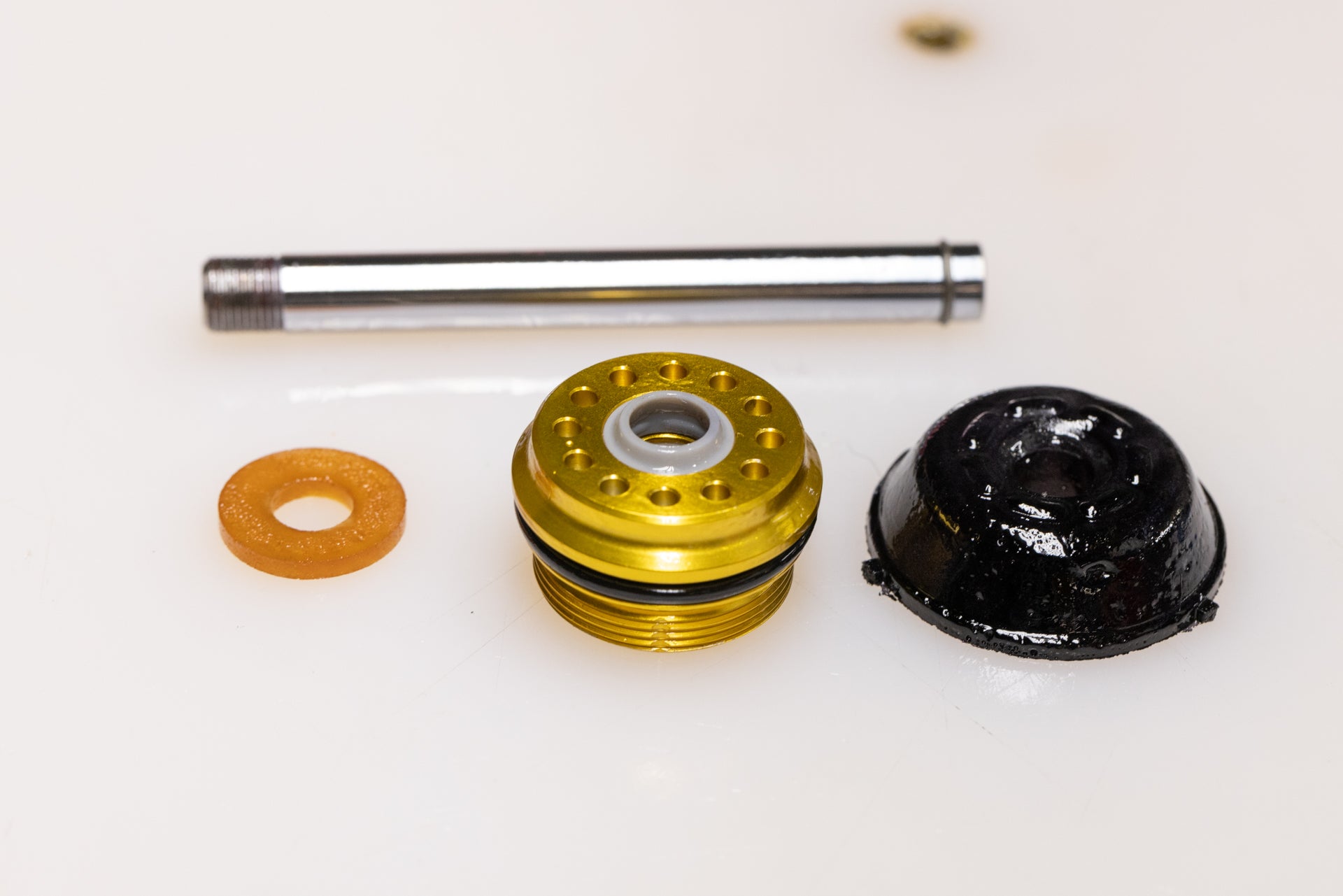
Step 4 – Final Disassembly
Remove bottom out bumper, oil seal head and top out bumper. Discard oil seal head only.

Final Shaft Disassembly

Shaft Disassembled
Continue to Part 2
Next
